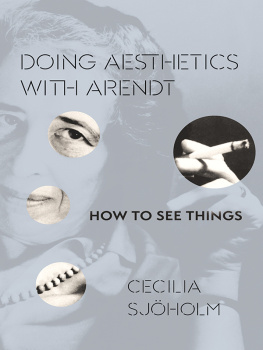Dewitt H. Parker - The Principles of Aesthetics
Here you can read online Dewitt H. Parker - The Principles of Aesthetics full text of the book (entire story) in english for free. Download pdf and epub, get meaning, cover and reviews about this ebook. year: 2010, genre: Science. Description of the work, (preface) as well as reviews are available. Best literature library LitArk.com created for fans of good reading and offers a wide selection of genres:
Romance novel
Science fiction
Adventure
Detective
Science
History
Home and family
Prose
Art
Politics
Computer
Non-fiction
Religion
Business
Children
Humor
Choose a favorite category and find really read worthwhile books. Enjoy immersion in the world of imagination, feel the emotions of the characters or learn something new for yourself, make an fascinating discovery.
- Book:The Principles of Aesthetics
- Author:
- Genre:
- Year:2010
- Rating:3 / 5
- Favourites:Add to favourites
- Your mark:
- 60
- 1
- 2
- 3
- 4
- 5
The Principles of Aesthetics: summary, description and annotation
We offer to read an annotation, description, summary or preface (depends on what the author of the book "The Principles of Aesthetics" wrote himself). If you haven't found the necessary information about the book — write in the comments, we will try to find it.
The Principles of Aesthetics — read online for free the complete book (whole text) full work
Below is the text of the book, divided by pages. System saving the place of the last page read, allows you to conveniently read the book "The Principles of Aesthetics" online for free, without having to search again every time where you left off. Put a bookmark, and you can go to the page where you finished reading at any time.
Font size:
Interval:
Bookmark:
Project Gutenberg's The Principles Of Aesthetics, by Dewitt H. Parker
Copyright laws are changing all over the world. Be sure to check thecopyright laws for your country before downloading or redistributingthis or any other Project Gutenberg eBook.
This header should be the first thing seen when viewing this ProjectGutenberg file. Please do not remove it. Do not change or edit theheader without written permission.
Please read the "legal small print," and other information about theeBook and Project Gutenberg at the bottom of this file. Included isimportant information about your specific rights and restrictions inhow the file may be used. You can also find out about how to make adonation to Project Gutenberg, and how to get involved.
**Welcome To The World of Free Plain Vanilla Electronic Texts**
**eBooks Readable By Both Humans and By Computers, Since 1971**
*****These eBooks Were Prepared By Thousands of Volunteers!*****
Title: The Principles Of Aesthetics
Author: Dewitt H. Parker
Release Date: August, 2004 [EBook #6366][Yes, we are more than one year ahead of schedule][This file was first posted on December 2, 2002]
Edition: 10
Language: English
*** START OF THE PROJECT GUTENBERG EBOOK THE PRINCIPLES OF AESTHETICS ***
Produced by Scott Pfenninger, Juliet Sutherland, Charles Franksand the Online Distributed Proofreading Team.
This book has grown out of lectures to students at the University ofMichigan and embodies my effort to express to them the nature andmeaning of art. In writing it, I have sought to maintain scientificaccuracy, yet at the same time to preserve freedom of style andsomething of the inspiration of the subject. While intended primarilyfor students, the book will appeal generally, I hope, to people whoare interested in the intelligent appreciation of art.
My obligations are extensive,most directly to those whom I have citedin foot-notes to the text, but also to others whose influence is tooindirect or pervasive to make citation profitable, or too obvious tomake it necessary. For the broader philosophy of art, my debt isheaviest, I believe, to the artists and philosophers during the periodfrom Herder to Hegel, who gave to the study its greatest development,and, among contemporaries, to Croce and Lipps. In addition, I havedrawn freely upon the more special investigations of recent times, butwith the caution desirable in view of the very tentative character ofsome of the results. To Mrs. Robert M. Wenley I wish to express mythanks for her very careful and helpful reading of the page proof.
The appended bibliography is, of course, not intended to be in anysense adequate, but is offered merely as a guide to further reading;a complete bibliography would itself demand almost a volume.
Although some feeling for beauty is perhaps universal among men, thesame cannot be said of the understanding of beauty. The average man,who may exercise considerable taste in personal adornment, in thedecoration of the home, or in the choice of poetry and painting, isat a loss when called upon to tell what art is or to explain why hecalls one thing "beautiful" and another "ugly." Even the artist andthe connoisseur, skilled to produce or accurate in judgment, are oftenwanting in clear and consistent ideas about their own works orappreciations. Here, as elsewhere, we meet the contrast between feelingand doing, on the one hand, and knowing, on the other. Just as practicalmen are frequently unable to describe or justify their most successfulmethods or undertakings, just as many people who astonish us with theirfineness and freedom in the art of living are strangely wanting inclear thoughts about themselves and the life which they lead soadmirably, so in the world of beauty, the men who do and appreciateare not always the ones who understand.
Very often, moreover, the artist and the art lover justify theirinability to understand beauty on the ground that beauty is too subtlea thing for thought. How, they say, can one hope to distill into clearand stable ideas such a vaporous and fleeting matter as Aestheticfeeling? Such men are not only unable to think about beauty, butskeptical as to the possibility of doing so,contented mystics, deeplyfeeling, but dumb.
However, there have always been artists and connoisseurs who havestriven to reflect upon their appreciations and acts, unhappy untilthey have understood and justified what they were doing; and one meetswith numerous art-loving people whose intellectual curiosity is ratherquickened than put to sleep by just that element of elusiveness inbeauty upon which the mystics dwell. Long acquaintance with any classof objects leads naturally to the formation of some definition orgeneral idea of them, and the repeated performance of the same typeof act impels to the search for a principle that can be communicatedto other people in justification of what one is doing and in defenseof the value which one attaches to it. Thoughtful people cannot longavoid trying to formulate the relation of their interest in beauty,which absorbs so much energy and devotion, to other human interests,to fix its place in the scheme of life. It would be surprising,therefore, if there had been no Shelleys or Sidneys to define therelation between poetry and science, or Tolstoys to speculate on thenature of all art; and we should wonder if we did not everywhere hearintelligent people discussing the relation of utility and goodness tobeauty, or asking what makes a poem or a picture great.
Now the science of aesthetics is an attempt to do in a systematic waywhat thoughtful art lovers have thus always been doing haphazardly.It is an effort to obtain a clear general idea of beautiful objects,our judgments upon them, and the motives underlying the acts whichcreate them,to raise the aesthetic life, otherwise a matter ofinstinct and feeling, to the level of intelligence, of understanding.To understand art means to find an idea or definition which appliesto it and to no other activity, and at the same time to determine itsrelation to other elements of human nature; and our understanding willbe complete if our idea includes all the distinguishing characteristicsof art, not simply enumerated, but exhibited in their achievedrelations.
How shall we proceed in seeking such an idea of art? We must followa twofold method: first, the ordinary scientific method of observation,analysis, and experiment; and second, another and very different method,which people of the present day often profess to avoid, but which isequally necessary, as I shall try to show, and actually employed bythose who reject it. In following the first method we treat beautifulthings as objects given to us for study, much as plants and animalsare given to the biologist. Just as the biologist watches the behaviorof his specimens, analyzes them into their various parts and functions,and controls his studies through carefully devised experiments, arrivingat last at a clear notion of what a plant or an animal isat adefinition of life; so the student of aesthetics observes works of artand other well-recognized beautiful things, analyzes their elementsand the forms of connection of these, arranges experiments to facilitateand guard his observations from error and, as a result, reaches thegeneral idea for which he is looking,the idea of beauty.
Next pageFont size:
Interval:
Bookmark:
Similar books «The Principles of Aesthetics»
Look at similar books to The Principles of Aesthetics. We have selected literature similar in name and meaning in the hope of providing readers with more options to find new, interesting, not yet read works.
Discussion, reviews of the book The Principles of Aesthetics and just readers' own opinions. Leave your comments, write what you think about the work, its meaning or the main characters. Specify what exactly you liked and what you didn't like, and why you think so.











